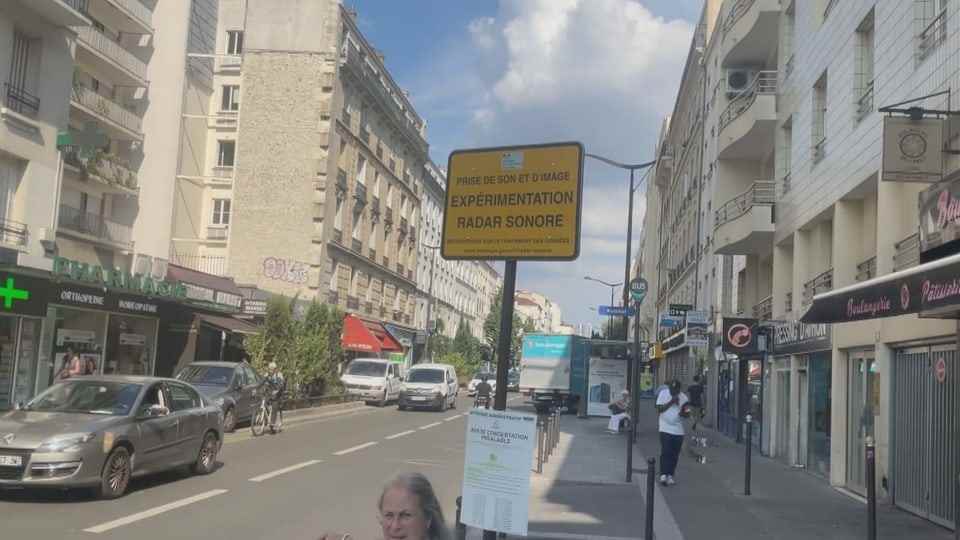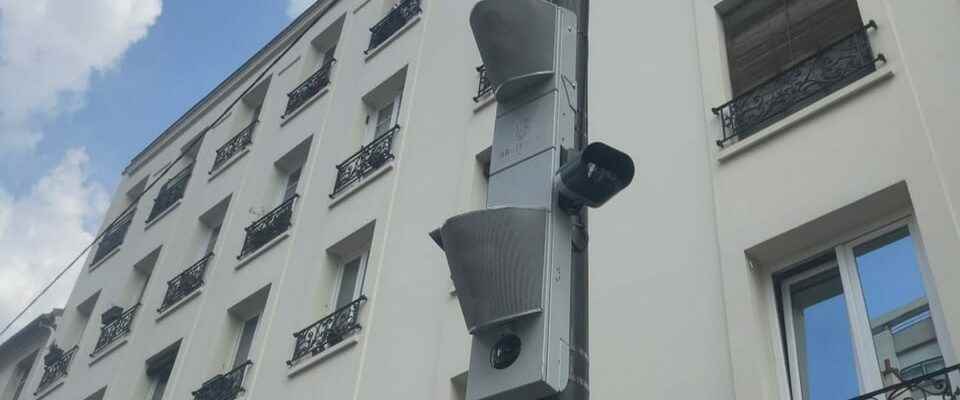contents
The Swiss Noise League presented a noise radar in Bern today. It should be the first that really works. However, the most important thing is still missing: a noise limit value.
It is a rather ugly device that has been hung in various French cities and also in England as a test this summer: the noise radar “Hydra” (English: “many-headed monster”).
Two highly sensitive noise sensors are hidden behind two mesh baskets, two cameras protrude left and right, a panorama camera films below and sensors for air pressure and humidity sprout above.
Legend:
The noise radar from the manufacturer Bruitparif is currently being tested in France
SRF
All of this is needed if the Hydra wants to precisely measure the noise of passing vehicles. If it rains, this increases the noise enormously, and reverberation noises from nearby house walls or the road surface are just as distorting. If a noise limit is exceeded, flashes are used and fines are imposed.
New cars are getting quieter and quieter
According to the manufacturer Bruitparif, the Hydra should be used in France as early as next year. Fines of 135 euros (134 Swiss francs) could be imposed on loud drivers.
Only: The main problem is not yet solved. From how much noise is there a fine? This would require an upper noise limit that applies equally to all vehicles. However, there is no such limit anywhere in Europe.
A limit for all vehicles is a very complex matter, both technically and legally, says Thomas Rohrbach, spokesman for the Astra. The Federal Roads Office is currently investigating whether such a limit value is even feasible. Because noise radars could also be used in Switzerland. On behalf of Parliament, the Astra must examine the idea. And above all: the feasibility of a general limit value.
Because whether a car was registered in the 1990s or today makes a big difference, also in terms of noise. After all, cars are getting quieter and quieter. The TCS proves this in a study for the Federal Office for the Environment (Bafu) and with cars that were registered between 2005 and 2015. In these ten years alone, the noise has been reduced by around a quarter.
Also use on country roads?
That can all be solved, says the Swiss Noise League. It presented the Hydra noise radar in Bern today and wants to have it set up in Switzerland as soon as possible. “The limit must be such that a normally operated car, regardless of its age, is not flashed,” says Martin Looser from the noise league.
It needs a safety margin. However, this would mean that the limit would have to be set very high.

Legend:
In France, the noise radar should only be set up in urban areas in 50 zones, where residents are particularly disturbed.
SRF
In Switzerland, however, the noise league also wants to set up the noise radar on mountain passes, as Looser told SRF. But that would mean that the limit would be set even higher, because vehicles are louder the faster they drive, whether they accelerate or even drive up a hill – and completely legally. A noise radar with a low limit value would have trouble not flashing too many legally driving cars or motorcycles.
However, Looser emphasizes that they do not want to be penalized for legal cars, as long as they do not cause “excessive noise”. One has “autoposers” and “noise rowdies” in their sights. “Excessive” noise, in other words, which is caused by tire squeal, unnecessarily accelerating, or unnecessarily high-speed driving. These noise polluters can already be fined today. The noise radar would listen where no police are present.
